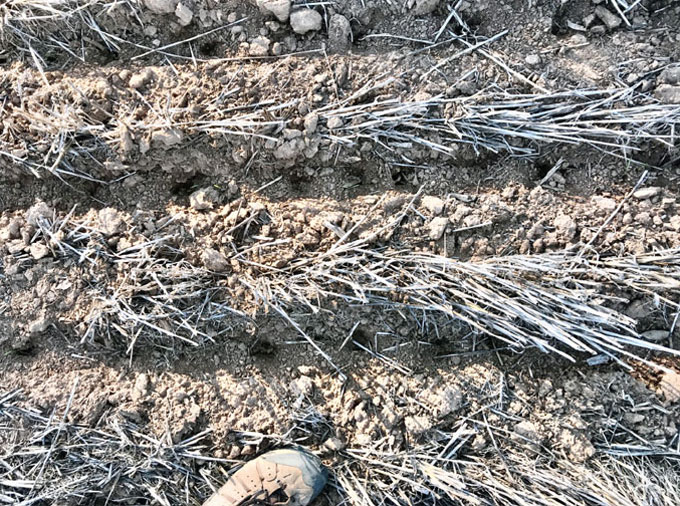Camouflaging wheat with a wheat smell could be a new approach to pest control
Now you smell it, now you don’t. Or do you? Used correctly, a little misdirection could help keep mice away from freshly planted wheat seeds.
Camouflaging wheat seeds can reduce seed loss by more than 60 percent, scientists report May 22 in Nature Sustainability. All it takes is to make the whole field smell like wheat.
Rodents, including mice, are responsible for nibbling away at 70 million metric tons of cereals every year. Some of that munching takes place in Australia, where, when the weather is right, house mice (Mus musculus) can reach plague proportions — skittering hordes of more than 1,000 mice per hectare, says Peter Banks, a behavioral ecologist at the University of Sydney. There are so many mice on the road, he says, no one can avoid them. “It’s like driving on bubble wrap.”
When farmers plant wheat, mice go down the rows, sniffing out the seeds under the soil and digging them up. Usually, farmers overrun with mice turn to poisons such as zinc phosphide, which changes to phosphine gas in a mouse’s stomach. Unfortunately, it’s hard to make any poison appealing enough to make mice ignore the wheat buffet, and farmers are having to use more and more of it, says Steve Henry, a rodent ecologist at the Commonwealth Scientific and Industrial Research Organization in Canberra, Australia, who was not involved in the study.
What if the mice couldn’t sniff out the grains at all? Banks and his colleague Finn Parker, also a behavioral ecologist at the University of Sydney, have been working on olfactory camouflage — covering scents with, well, more scents. The technique started with invasive predators who hunt for threatened bird nests by smelling them out. “We thought, well, if we put those odors everywhere, how on Earth can they then find out where the nests actually are,” Banks says.
Banks, Parker and their colleagues had been using mice to study olfactory camouflage in the lab. When Banks saw a photo of the holes mice were digging into grain fields, “I thought, they’re finding those seeds by smell. And so can we use the same idea in that system?”
Before or during sowing, the scientists sprayed mouse-riddled test plots with wheat germ oil, a byproduct of wheat processing that is usually used in cosmetics and animal feed. The oils are the most nutritious parts, Banks says, and the smell of the oils is “what [the mice] are using to find the seeds beneath the ground.”

Two weeks after the seeds had been sown, plots that had been hosed down with oil before sowing had 74 percent fewer mouse holes—from an average of around 125 holes per plot to fewer than 30. Plots that got the oil during sowing had 63 percent fewer holes — from around 125 to fewer than 40 stolen seeds. When the plots got oil before sowing, Parker says, the mice “were coming, they’re seeking food, and they were just finding nothing.” In that case when the seeds went into the ground, the mice may have already learned not to bother with that plot. When the oil was delivered during sowing, it became harder for the animals to find the wheat seeds they were seeking.
“That’s one of the most elegant parts of it,” Henry says. “Saturating the area with the smell of wheat.” The challenge, he notes, will be getting farmers to adopt it. The test was done on a 27-hectare wheat crop, but farmers in Australia are often planting 6,000 hectares or more. They’d need a way to apply the wheat germ oil at the time of planting, when they already have a lot to manage.
And the camouflage probably won’t be enough on its own, Henry says. “I don’t see it as replacing bait, but I see this another tool in the shed that will really help.”
For all the latest Science News Click Here
For the latest news and updates, follow us on Google News.

